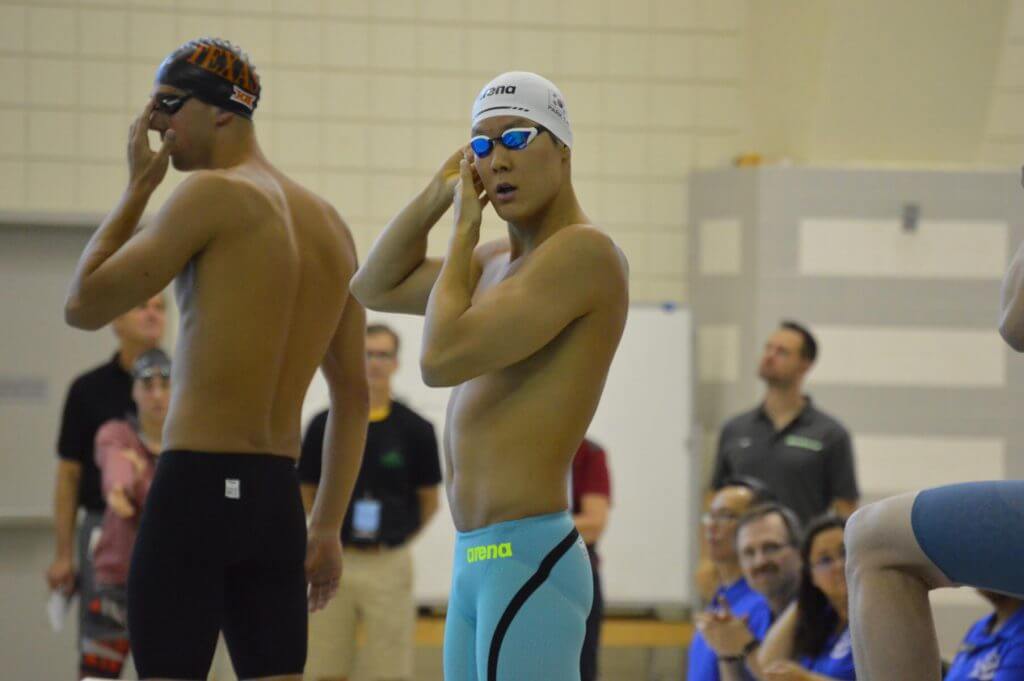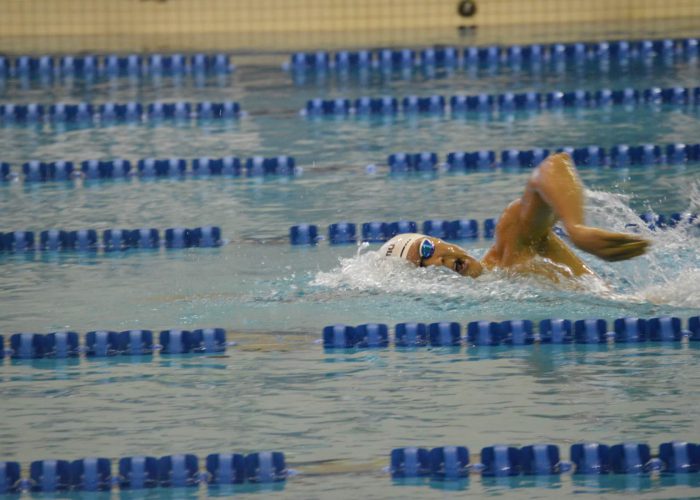Swim Spotlight: Park Tae-Hwan’s 400 Freestyle

By Bryan Gu, Swimming World Intern.
Korean distance swimmer Park Tae-Hwan first erupted onto the international scene in 2007, when he won the 400 freestyle in seemingly resounding fashion, winning the event by a little under a second. He would ride this momentum through the following year by winning a gold medal at the 2008 Beijing Olympics in the same event, thus marking the beginning of a long and successful distance swimming career.
Park has participated most recently in the Arena Pro Swim Series in Atlanta. He surprised the community late last year, having recently come off a 18-month suspension, when he upset the Olympic Champion Gregorio Paltrinieri in the 1500 freestyle at Short Course World Championships.
Continuing to exceed expectations, Park put up a fantastic showing in Atlanta by he making World Championship A-cut qualifying times in the 100, 200, 400, and 1500 freestyle events. His 400 freestyle time of 3:44.38 notably ranked him at No. 4 in the world this year – the race can be seen here.
A former world champion in the event, Park’s time at Atlanta is comparable to his gold medal swim at the 2007 World Championships in Melbourne.
| 2007 World Championships | 2017 Arena Pro Swim Series in Atlanta |
|---|---|
| 26.19 | 25.47 |
| 55.00 (28.81) | 53.53 (28.06) |
| 1:23.83 (28.83) | 1:22.09 (28.56) |
| 1:52.87 (29.04) | 1:51.07 (28.98) |
| 2:21.49 (28.62) | 2:19.91 (28.84) |
| 2:50.39 (28.90) | 2:49.19 (29.28) |
| 3:18.24 (27.85) | 3:18.11 (28.92) |
| 3:44.30 (26.06) | 3:44.38 (26.27) |
In 2007, contrary to what the times show, Park’s victory was down to the wire. Trailing behind for the majority of the race, it wasn’t until the final 100 meters that Park made his final push. Despite splitting a quick 53.91, it wasn’t until the last 30 meters that Park managed to take the lead.
This race highlights Park’s racing strategy. Similar to the Chinese distance swimmer, Sun Yang, Park’s race relies on his natural opening speed and ability to maintain a consistent tempo, before giving whatever is left in the frantic final 100 meter sprint. However Sun’s stroke is renowned for its efficiency, whereas Park’s stroke has a much higher turnover rate that allows him to find earlier speed and gain early momentum in a race. This can prove highly influential in a distance race as short as the 400, as evidenced by the 2011 World Championships in Shanghai, where Park was able to defeat his Chinese counterpart by a considerable one-second margin.
Looking at Park’s 400 freestyle, a year later at the 2008 Beijing Olympics, anyone might believe that he had radically changed his race strategy. This time he took a commanding lead, taking the first 100 out in a strong 53.97 and never letting go, winning in 3:41.53.
Yet if one were to look at Park’s splits, they would find that they always follow a consistent pattern. The initial 80 perccent of his race consists of consistent 50 splits, normally in the 28 range depending on the time of year, before he picks up his kick and stroke rate and comes home in a 54 high or 53 low. The difference between Melbourne and Beijing can be chalked up to physical maturity and endurance, as Park’s performances in World Championships following 2007 show consistent performances near that time of the year.
Park’s showing at Atlanta this past weekend seemed to be a repeat of Beijing, as he took the race out in a strong 53.53 and extended that lead to an almost four second victory over his next competitor.
Although the splits in this race remained consistent, it is worth noting that it appears as though Park may be tinkering with his race strategy: focusing on the front half of his race. His opening hundred split was one of the fastest he has ever done, yet the lack of his usual finishing speed and the slower average splits suggest that he is not still entirely comfortable.

Of course, these could also be signs of fatigue, and perhaps given some rest and a good taper we may see the Park Tae-Hwan we have seen so often before: one that is able to establish a quick early rhythm, yet still charge home at the end.
Park’s current time appears to set him up nicely for Budapest this July, where he will once again be competing against old rivals, such as Sun Yang and Paltrinieri, who will no doubt be tough competition for the veteran swimmer.
Given what we’ve seen from him so far and what we’ve seen from him in the past, a 3:41 seems likely, and Park looks to be in a good position to reach the podium. Park’s 3:44 at Atlanta was a statement: regardless of old rivals and new challenges, he is ready to destroy people’s expectations.
All commentaries are the opinion of the author and do not necessarily reflect the views of Swimming World Magazine nor its staff.




Interesting analysis of the swimming styles between the Park & Sun Yang. Wonder which style is more efficient and will eventually win the Olympics.